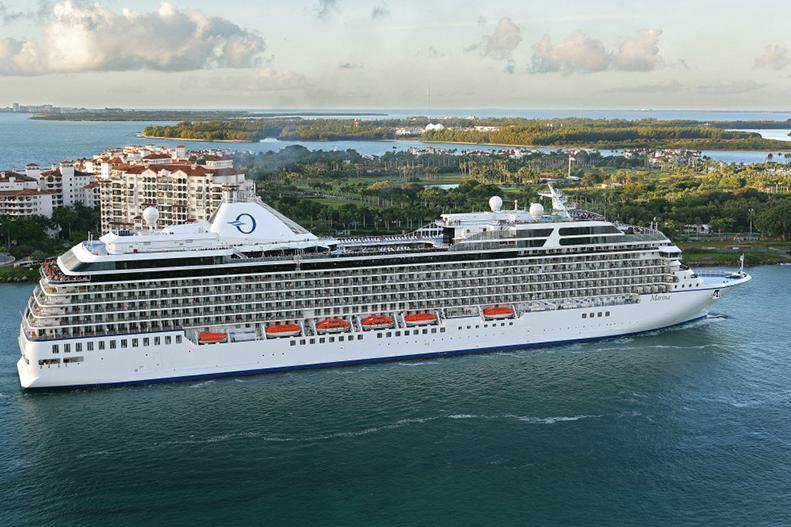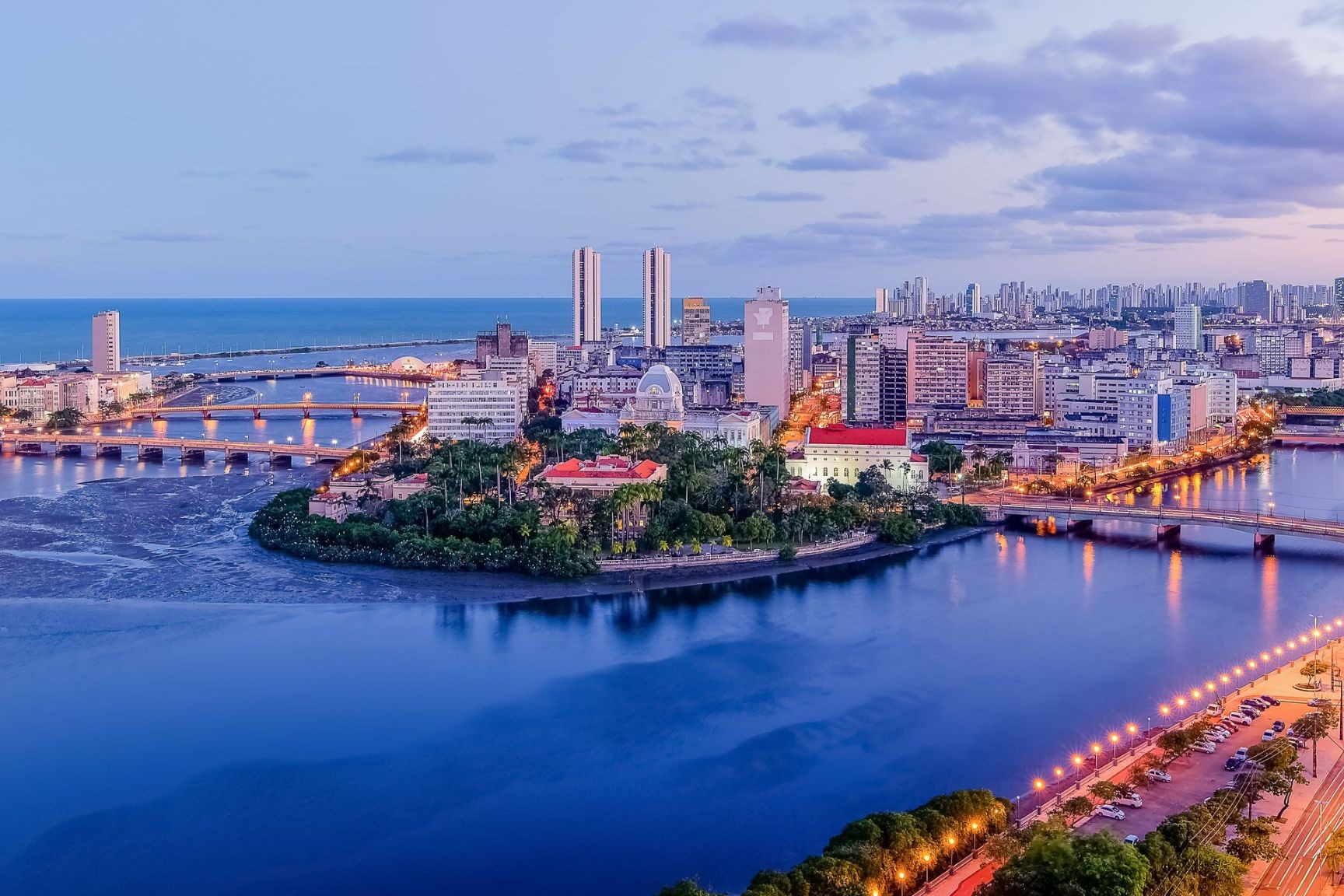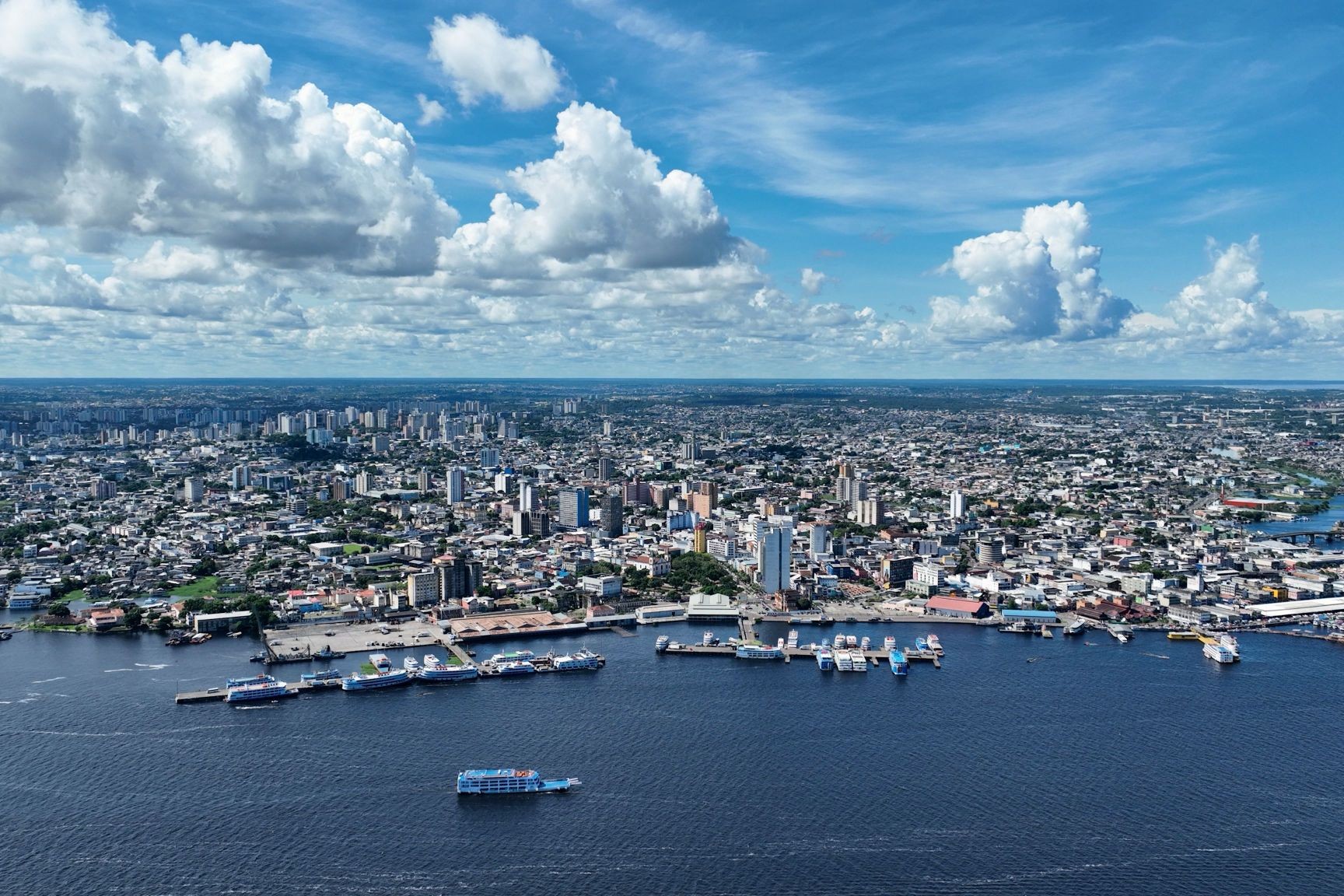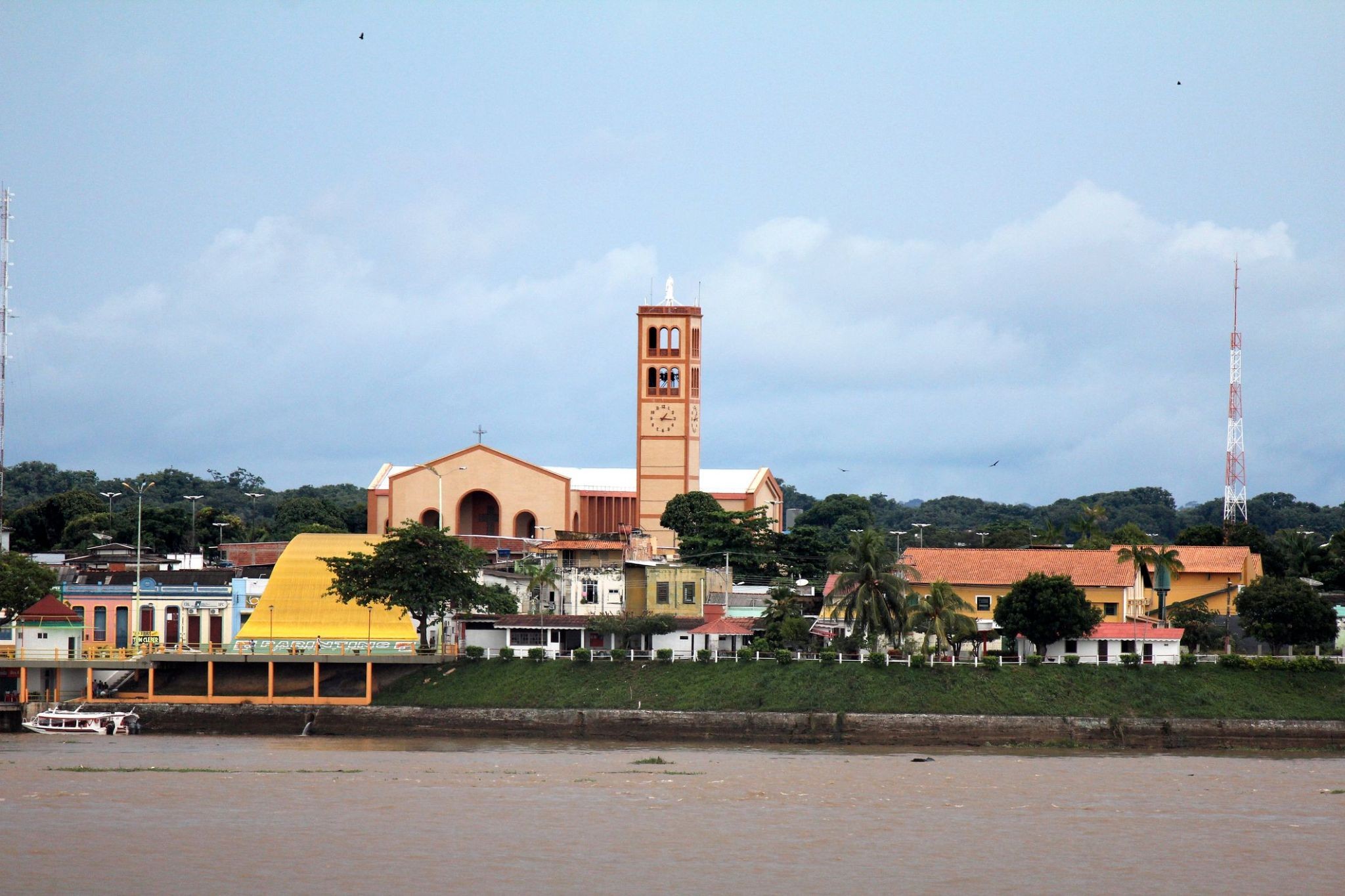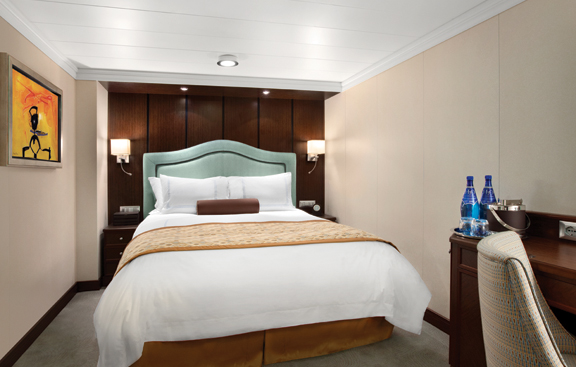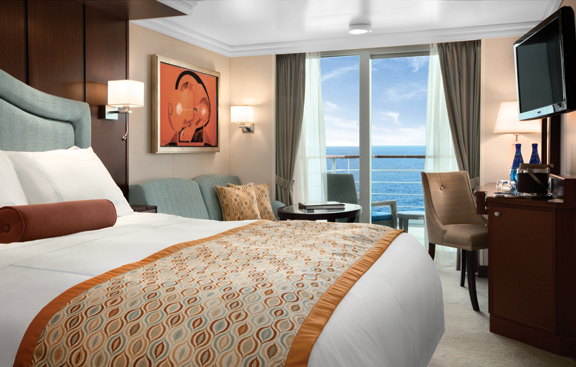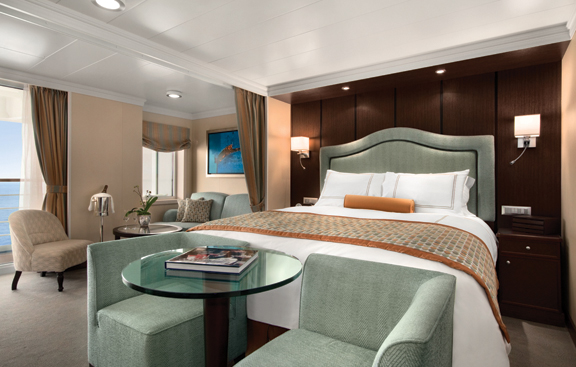Rejs 30 941 230
Serce Amazonii
| Region rejsu : Ameryka Południowa/Antarktyda |
| Firma : Oceania Cruises |
| Statek : Marina |
| Data rozpoczęcia : wt. 17 mar 2026 |
| Data zakończenia : wt. 07 kwi 2026 |
| Liczba nocy : 21 noc |
Harmonogram
| Dzień | Data | Port | Wypłynięcie | Odpłynięcie |
|---|---|---|---|---|
| 1 | 17.03 wt. | Rio de Janeiro / Brazylia | ||
| 2 | 18.03 śr. | Rio de Janeiro / Brazylia | 13:00 | |
| 3 | 19.03 czw. | Dzień na morzu / Morze | ||
| 4 | 20.03 pt. | Dzień na morzu / Morze | ||
| 5 | 21.03 sob. | Recife / Brazylia | 07:00 | 15:00 |
| 6 | 22.03 niedz. | Dzień na morzu / Morze | ||
| 7 | 23.03 pon. | Dzień na morzu / Morze | ||
| 8 | 24.03 wt. | Dzień na morzu / Morze | ||
| 9 | 25.03 śr. | Alter do Chao / Brazylia | 13:00 | 20:00 |
| 10 | 26.03 czw. | Wioska Boca de Valeria / Brazylia | 07:00 | 15:00 |
| 11 | 27.03 pt. | Manaus / Brazylia | 09:00 | |
| 12 | 28.03 sob. | Manaus / Brazylia | 16:00 | |
| 13 | 29.03 niedz. | Parintins / Brazylia | 10:00 | 18:00 |
| 14 | 30.03 pon. | Santarem / Brazylia | 07:00 | 15:00 |
| 15 | 31.03 wt. | Dzień na morzu / Morze | ||
| 16 | 1.04 śr. | Dzień na morzu / Morze | ||
| 17 | 2.04 czw. | Dzień na morzu / Morze | ||
| 18 | 3.04 pt. | Castries / Saint Lucia | 11:00 | 17:00 |
| 19 | 4.04 sob. | Basseterre, Saint Kitts / Saint Kitts i Nevis | 07:00 | 14:00 |
| 20 | 5.04 niedz. | Dzień na morzu / Morze | ||
| 21 | 6.04 pon. | Dzień na morzu / Morze | ||
| 22 | 7.04 wt. | Miami / USA | 07:00 | 17:00 |
-
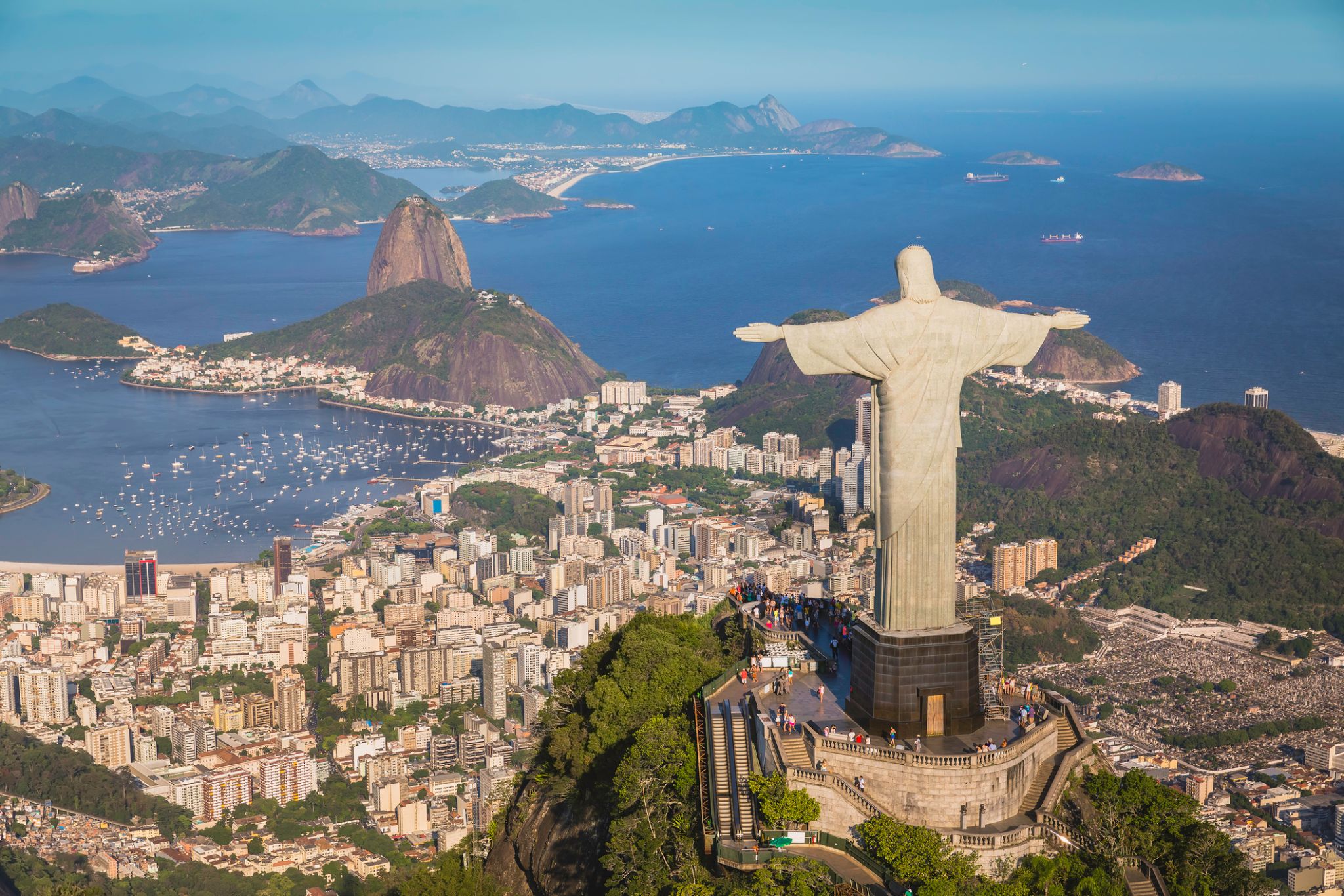 Dzień 1:
Dzień 1:Rio de Janeiro / Brazylia
Rio de Janeiro is the second-most populous municipality in Brazil and the sixth-most populous in the Americas. The metropolis is anchor to the Rio de Janeiro metropolitan area, the second-most populous metropolitan area in Brazil and sixth-most populous in the Americas. Rio de Janeiro is the capital of the state of Rio de Janeiro, Brazil's third-most populous state. Part of the city has been designated as a World Heritage Site, named "Rio de Janeiro: CariocaLandscapes between the Mountain and the Sea", by UNESCO on 1 July 2012 as a Cultural Landscape.
Founded in 1565 by the Portuguese, the city was initially the seat of the Captaincy of Rio de Janeiro, a domain of the Portuguese Empire. Later, in 1763, it became the capital of the State of Brazil, a state of the Portuguese Empire. In 1808, when the Portuguese Royal Court transferred itself from Portugal to Brazil, Rio de Janeiro became the chosen seat of the court of Queen Maria I of Portugal, who subsequently, in 1815, under the leadership of her son, the Prince Regent, and future King João VI of Portugal, raised Brazil to the dignity of a kingdom, within the United Kingdom of Portugal, Brazil, and Algarves. Rio stayed the capital of the pluricontinental Lusitanian monarchy until 1822, when the War of Brazilian Independence began. This is one of the few instances in history that the capital of a colonising country officially shifted to a city in one of its colonies. Rio de Janeiro subsequently served as the capital of the independent monarchy, the Empire of Brazil, until 1889, and then the capital of a republican Brazil until 1960 when the capital was transferred to Brasília.
-
 Dzień 2: 13:00
Dzień 2: 13:00Rio de Janeiro / Brazylia
Rio de Janeiro is the second-most populous municipality in Brazil and the sixth-most populous in the Americas. The metropolis is anchor to the Rio de Janeiro metropolitan area, the second-most populous metropolitan area in Brazil and sixth-most populous in the Americas. Rio de Janeiro is the capital of the state of Rio de Janeiro, Brazil's third-most populous state. Part of the city has been designated as a World Heritage Site, named "Rio de Janeiro: CariocaLandscapes between the Mountain and the Sea", by UNESCO on 1 July 2012 as a Cultural Landscape.
Founded in 1565 by the Portuguese, the city was initially the seat of the Captaincy of Rio de Janeiro, a domain of the Portuguese Empire. Later, in 1763, it became the capital of the State of Brazil, a state of the Portuguese Empire. In 1808, when the Portuguese Royal Court transferred itself from Portugal to Brazil, Rio de Janeiro became the chosen seat of the court of Queen Maria I of Portugal, who subsequently, in 1815, under the leadership of her son, the Prince Regent, and future King João VI of Portugal, raised Brazil to the dignity of a kingdom, within the United Kingdom of Portugal, Brazil, and Algarves. Rio stayed the capital of the pluricontinental Lusitanian monarchy until 1822, when the War of Brazilian Independence began. This is one of the few instances in history that the capital of a colonising country officially shifted to a city in one of its colonies. Rio de Janeiro subsequently served as the capital of the independent monarchy, the Empire of Brazil, until 1889, and then the capital of a republican Brazil until 1960 when the capital was transferred to Brasília.
-
 Dzień 3:
Dzień 3:Dzień na morzu / Morze
-
 Dzień 4:
Dzień 4:Dzień na morzu / Morze
-
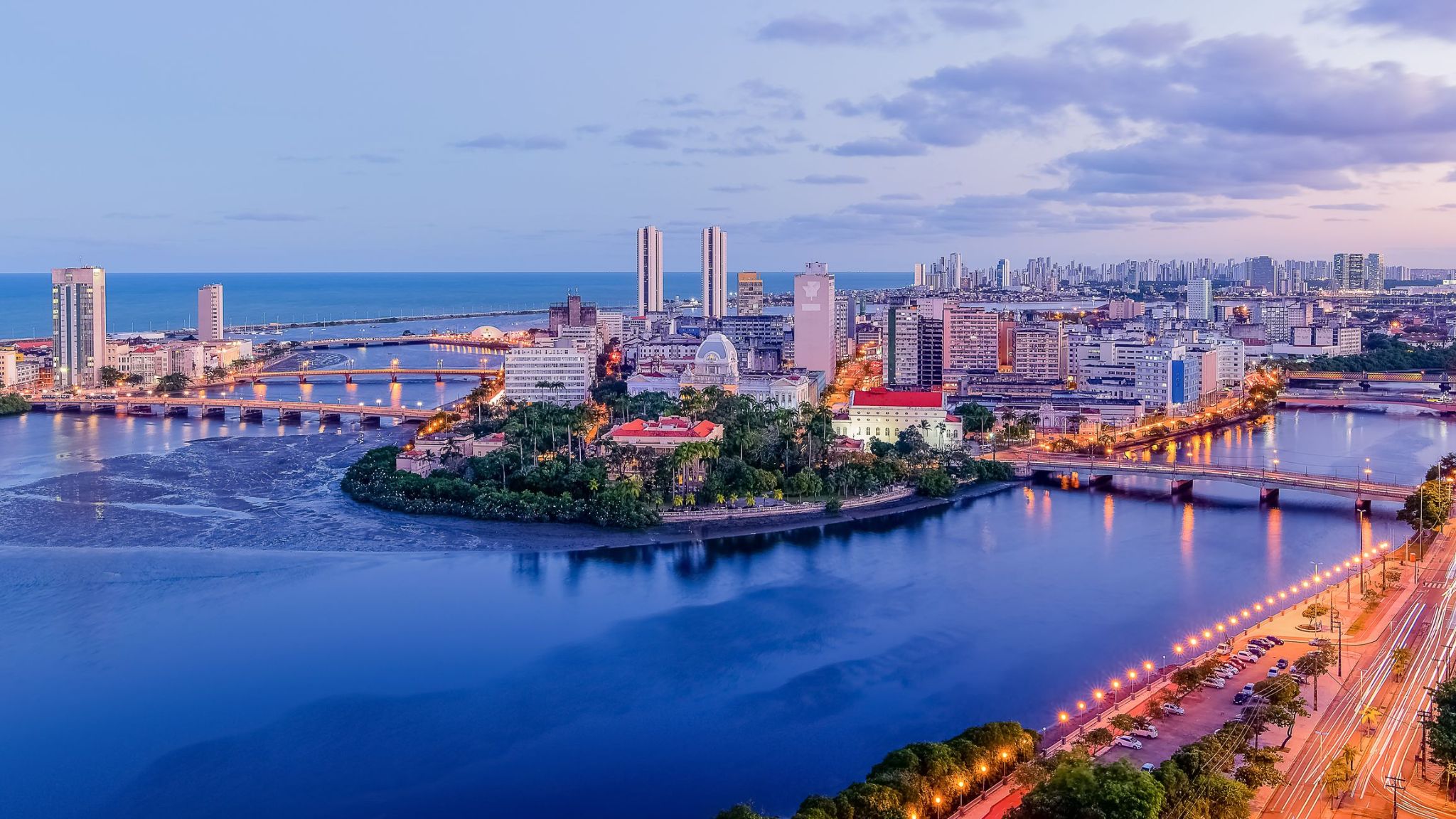 Dzień 5: 07:00-15:00
Dzień 5: 07:00-15:00Recife / Brazylia
Recife: Tropikalna Wenecja Brazylii
Recife, stolica stanu Pernambuco w północno-wschodniej Brazylii, znane jest ze swojej sieci kanałów, mostów i rzek, dzięki czemu nazywane jest „brazylijską Wenecją”. Miasto łączy kolonialną architekturę z nowoczesnymi drapaczami chmur i tętniącą życiem kulturą, widoczną podczas karnawałów, w muzyce frevo i rytmach maracatu. Zabytkowa dzielnica Recife Antigo zachowuje portugalskie dziedzictwo wąskimi uliczkami, kościołami i starymi budynkami.Recife słynie także z plaż, zwłaszcza Boa Viagem, gdzie biały piasek i palmy kontrastują z miejską panoramą. Turyści mogą zwiedzać muzea, jak Instytut Ricardo Brennanda z kolekcją broni i sztuki, lub odwiedzić pobliską kolonialną miejscowość Olinda, wpisaną na listę UNESCO. To idealne miejsce dla osób poszukujących kultury, relaksu nad morzem i autentycznej brazylijskiej atmosfery.
-
 Dzień 6:
Dzień 6:Dzień na morzu / Morze
-
 Dzień 7:
Dzień 7:Dzień na morzu / Morze
-
 Dzień 8:
Dzień 8:Dzień na morzu / Morze
-
 Dzień 9: 13:00-20:00
Dzień 9: 13:00-20:00Alter do Chao / Brazylia
-
 Dzień 10: 07:00-15:00
Dzień 10: 07:00-15:00Wioska Boca de Valeria / Brazylia
-
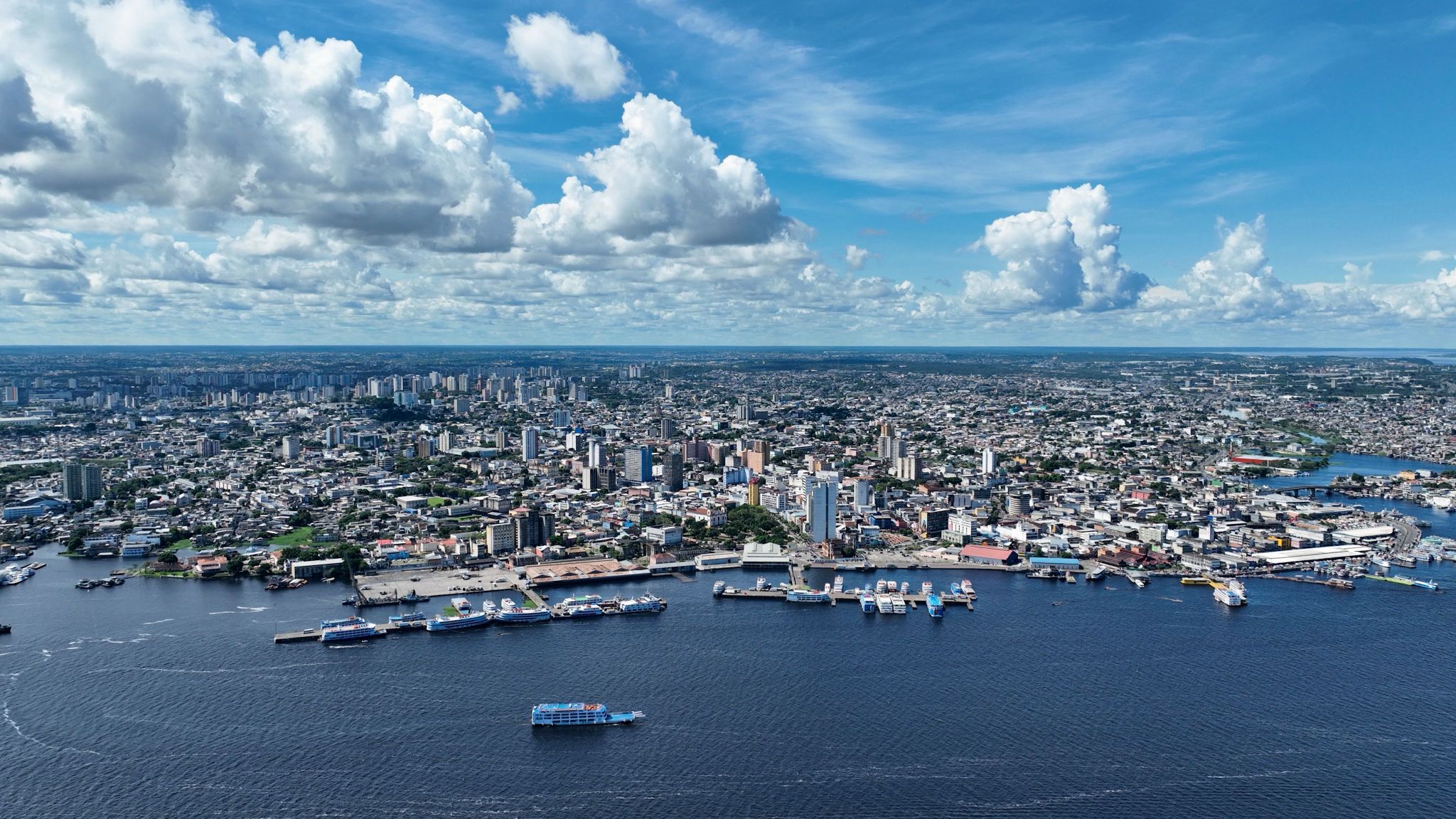 Dzień 11: 09:00
Dzień 11: 09:00Manaus / Brazylia
W sercu Amazonii, gdzie natura i historia łączą się w unikalną całość, znajduje się miasto Manaus — stolica stanu Amazonas i największe miasto regionu z ponad milionem mieszkańców. Zyskało sławę podczas boomu kauczukowego w ubiegłym wieku, kiedy to w 1896 roku wybudowano luksusową Operę, której materiały sprowadzono z Europy mimo wysokich kosztów. Otoczone dżunglą z trzech stron, Manaus wyróżnia się w porównaniu z europejskimi miastami zacienionymi uliczkami, niewielkimi parkami oraz tradycyjnymi czyścicielami butów. Zaledwie dziesięć minut spacerem od centrum można zobaczyć domy na palach z dachami z liści palmowych, zamieszkane przez rdzenne rodziny, które oferują autentyczną atmosferę Amazonii.
Jednym z naturalnych cudów miasta jest „Spotkanie Wód”. Tutaj ciemne, bogate w minerały wody Rio Negro łączą się z żółtawymi wodami rzeki Solimões, tworząc potężną Amazonkę. Przez około dwa kilometry te wody płyną obok siebie, nie mieszając się ze względu na różnicę temperatur, co tworzy imponujący spektakl przyrody. Manaus uważane jest za jedno z najczystszych ekologicznie miast na świecie i znajduje się zaledwie pięć godzin lotu od Rio de Janeiro — idealny punkt startowy do odkrywania niesamowitej amazońskiej dżungli.
-
 Dzień 12: 16:00
Dzień 12: 16:00Manaus / Brazylia
W sercu Amazonii, gdzie natura i historia łączą się w unikalną całość, znajduje się miasto Manaus — stolica stanu Amazonas i największe miasto regionu z ponad milionem mieszkańców. Zyskało sławę podczas boomu kauczukowego w ubiegłym wieku, kiedy to w 1896 roku wybudowano luksusową Operę, której materiały sprowadzono z Europy mimo wysokich kosztów. Otoczone dżunglą z trzech stron, Manaus wyróżnia się w porównaniu z europejskimi miastami zacienionymi uliczkami, niewielkimi parkami oraz tradycyjnymi czyścicielami butów. Zaledwie dziesięć minut spacerem od centrum można zobaczyć domy na palach z dachami z liści palmowych, zamieszkane przez rdzenne rodziny, które oferują autentyczną atmosferę Amazonii.
Jednym z naturalnych cudów miasta jest „Spotkanie Wód”. Tutaj ciemne, bogate w minerały wody Rio Negro łączą się z żółtawymi wodami rzeki Solimões, tworząc potężną Amazonkę. Przez około dwa kilometry te wody płyną obok siebie, nie mieszając się ze względu na różnicę temperatur, co tworzy imponujący spektakl przyrody. Manaus uważane jest za jedno z najczystszych ekologicznie miast na świecie i znajduje się zaledwie pięć godzin lotu od Rio de Janeiro — idealny punkt startowy do odkrywania niesamowitej amazońskiej dżungli.
-
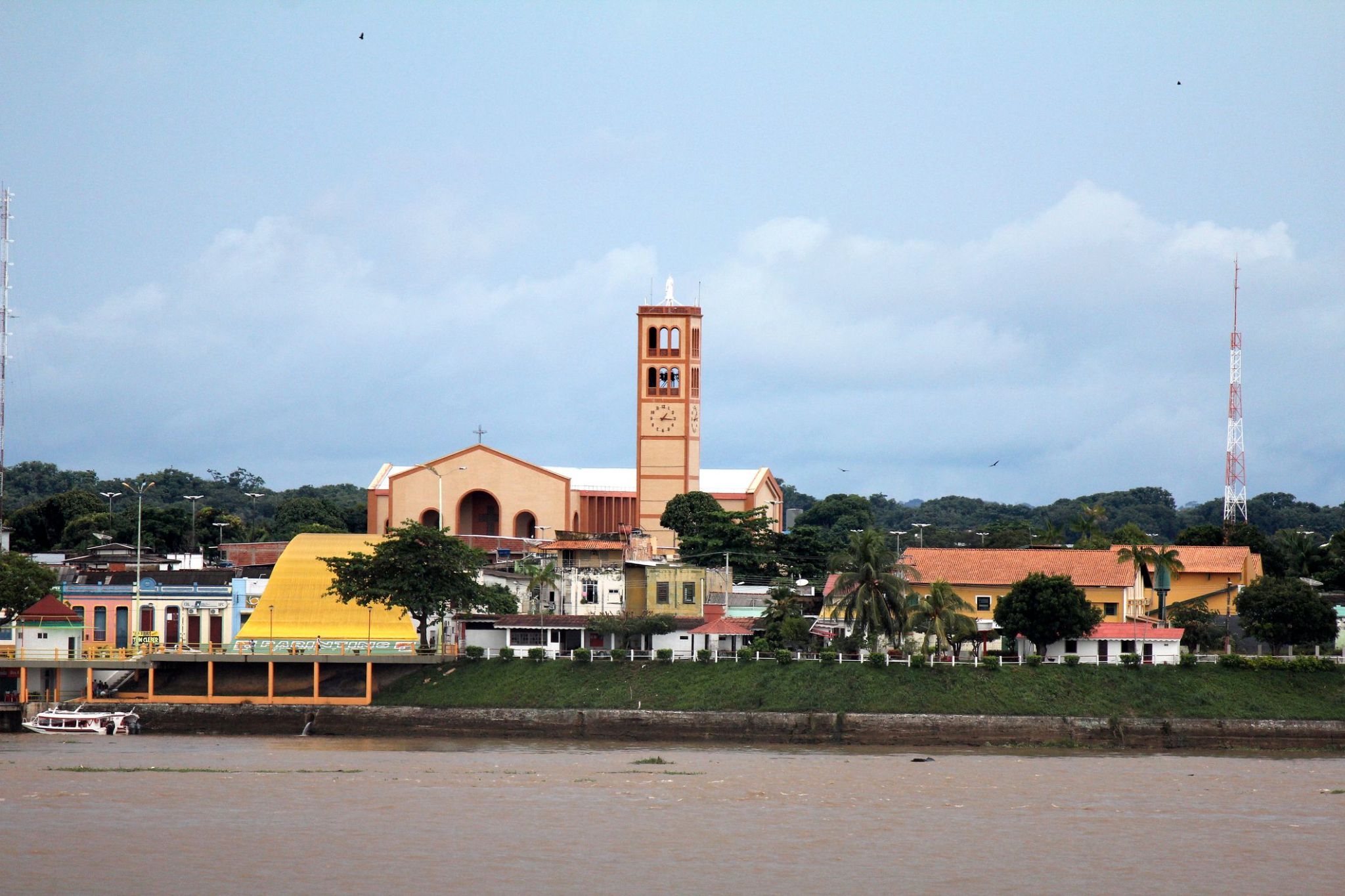 Dzień 13: 10:00-18:00
Dzień 13: 10:00-18:00Parintins / Brazylia
Otoczony żywymi tradycjami i malowniczą przyrodą, region na wyspie Parintins oferuje wyjątkowe połączenie kulturalnej zabawy i tropikalnej dziczy. Co roku odbywa się tu słynny festiwal Bumba-Meu-Boi, który przyciąga tysiące turystów z całego świata, pragnących zanurzyć się w lokalne legendy, muzykę i taniec. Dodatkowo okolice obfitują w rzeki i lasy, gdzie można cieszyć się spacerami i poznawać bogactwo amazońskiej fauny.
Podróż do Parintins to szansa, aby odkryć nie tylko piękno amazońskich krajobrazów, ale także żywą kulturę brazylijskiego narodu. Małe wioski z przyjaznymi mieszkańcami, tradycyjne rękodzieło i kuchnia tworzą atmosferę przytulności i autentyczności. To miejsce, gdzie każdy gość znajdzie coś dla siebie — od zapierających dech w piersiach przygód przyrodniczych po niezapomniane doświadczenia kulturalne.
-
 Dzień 14: 07:00-15:00
Dzień 14: 07:00-15:00Santarem / Brazylia
-
 Dzień 15:
Dzień 15:Dzień na morzu / Morze
-
 Dzień 16:
Dzień 16:Dzień na morzu / Morze
-
 Dzień 17:
Dzień 17:Dzień na morzu / Morze
-
 Dzień 18: 11:00-17:00
Dzień 18: 11:00-17:00Castries / Saint Lucia
-
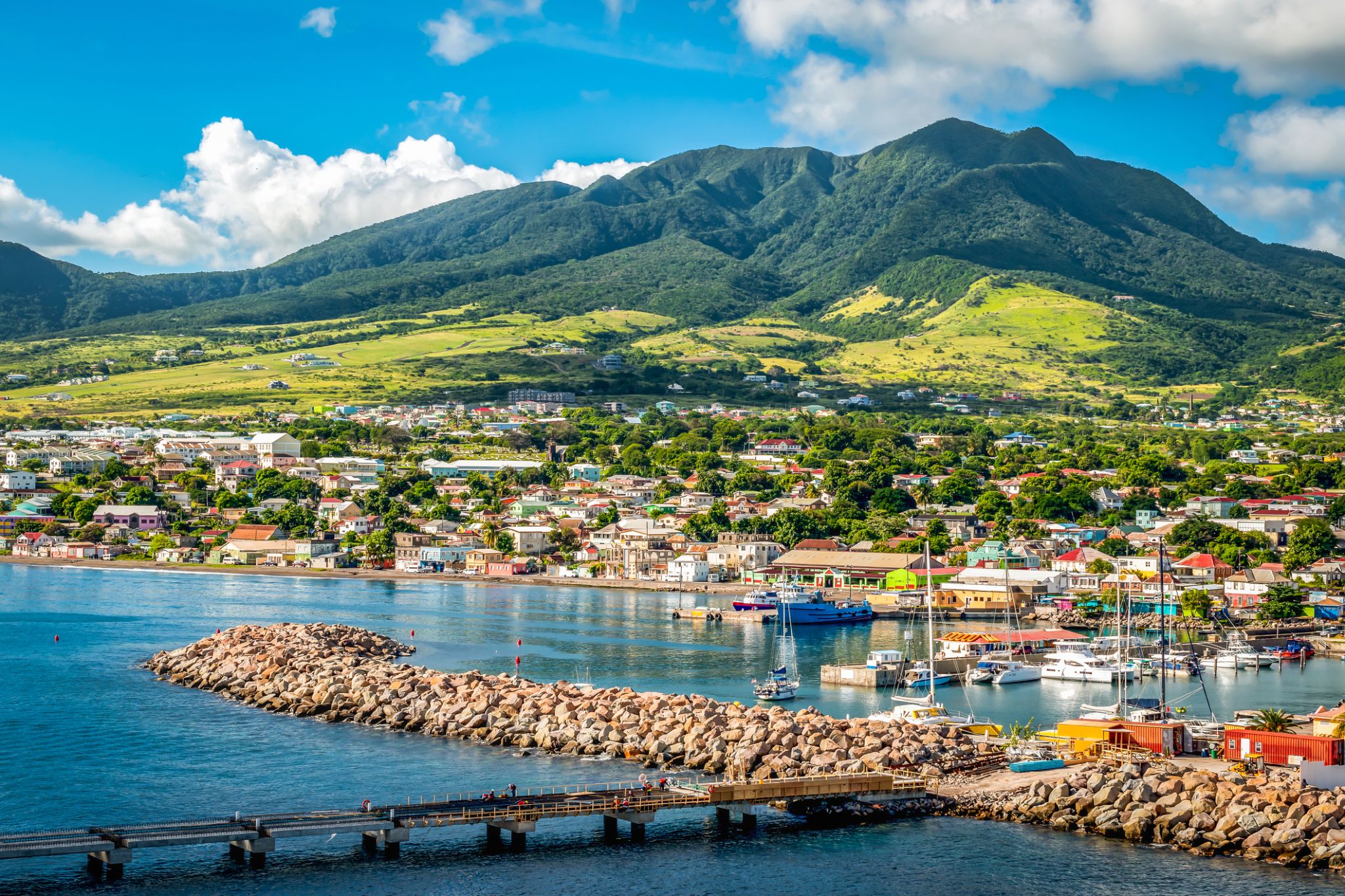 Dzień 19: 07:00-14:00
Dzień 19: 07:00-14:00Basseterre, Saint Kitts / Saint Kitts i Nevis
-
 Dzień 20:
Dzień 20:Dzień na morzu / Morze
-
 Dzień 21:
Dzień 21:Dzień na morzu / Morze
-
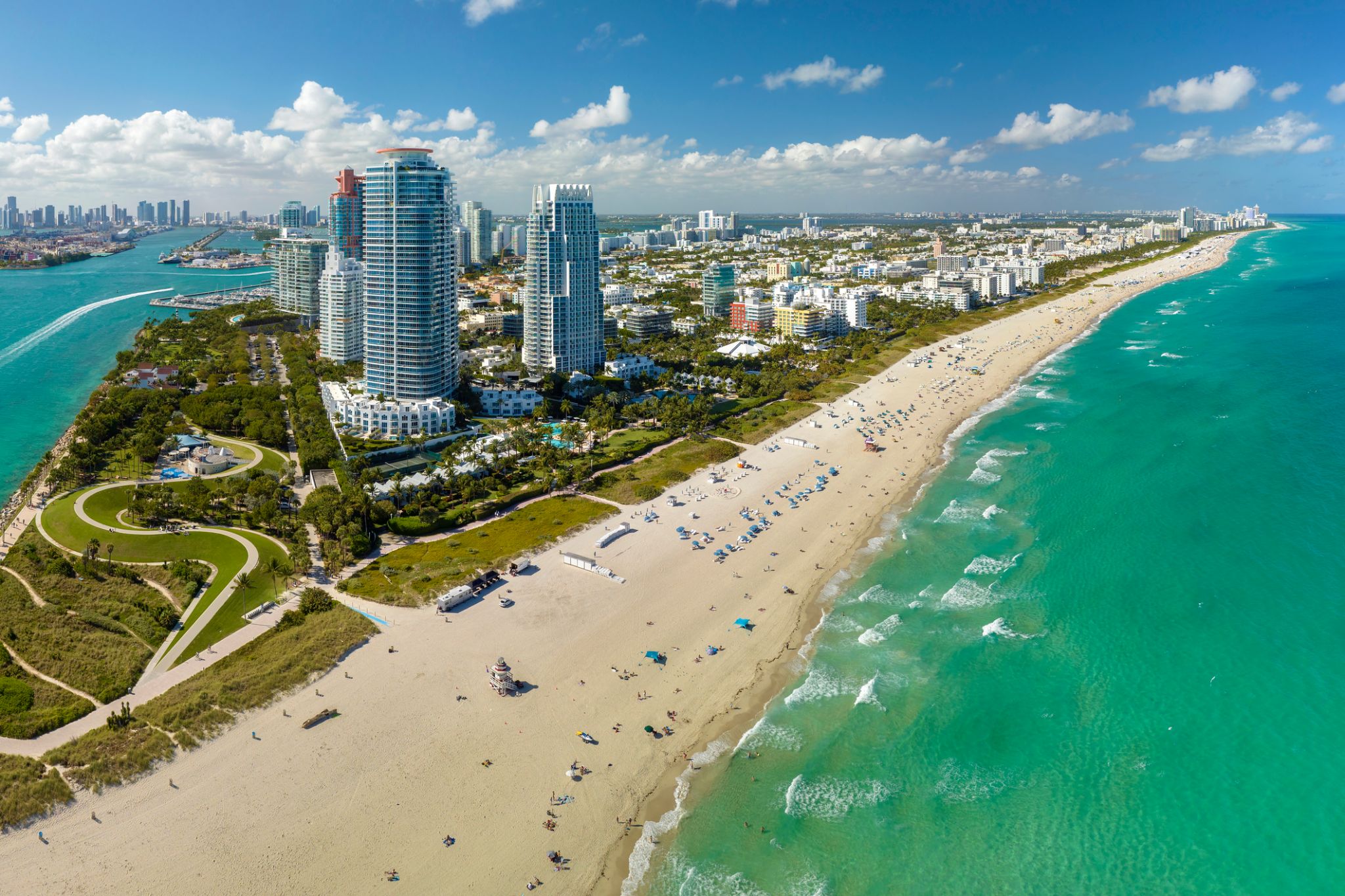 Dzień 22: 07:00-17:00
Dzień 22: 07:00-17:00Miami / USA
Miami, officially the City of Miami, is the cultural, economic and financial center of South Florida. Miami is the seat of Miami-Dade County, the most populous county in Florida. The city covers an area of about 56.6 square miles (147 km2), between the Everglades to the west and Biscayne Bay on the east; with a 2017 estimated population of 463,347, Miami is the sixth most densely populated major city in the United States. The Miami metropolitan area is home to 6.1 million people and the seventh-largest metropolitan area in the nation. Miami's metro area is the second-most populous metropolis in the southeastern United States and fourth-largest urban area in the U.S.
Miami is a major center, and a leader in finance, commerce, culture, media, entertainment, the arts, and international trade. The Miami Metropolitan Area is by far the largest urban economy in Florida and the 12th largest in the United States with a GDP of $344.9 billion as of 2017. In 2012, Miami was classified as an "Alpha−" level world city in the World Cities Study Group's inventory. In 2010, Miami ranked seventh in the United States and 33rd among global cities in terms of business activity, human capital, information exchange, cultural experience, and political engagement. In 2008, Forbes magazine ranked Miami "America's Cleanest City", for its year-round good air quality, vast green spaces, clean drinking water, clean streets, and citywide recycling programs. According to a 2009 UBS study of 73 world cities, Miami was ranked as the richest city in the United States, and the world's seventh-richest city in terms of purchasing power. Miami is nicknamed the "Capital of Latin America" and is the largest city with a Cuban-American plurality.
Greater Downtown Miami has one of the largest concentrations of international banks in the United States, and is home to many large national and international companies. The Civic Center is a major center for hospitals, research institutes, medical centers, and biotechnology industries. For more than two decades, the Port of Miami, known as the "Cruise Capital of the World", has been the number one cruise passenger port in the world. It accommodates some of the world's largest cruise ships and operations, and is the busiest port in both passenger traffic and cruise lines. Metropolitan Miami is also a major tourism hub in the southeastern U.S. for international visitors, ranking number two in the country after New York City.

